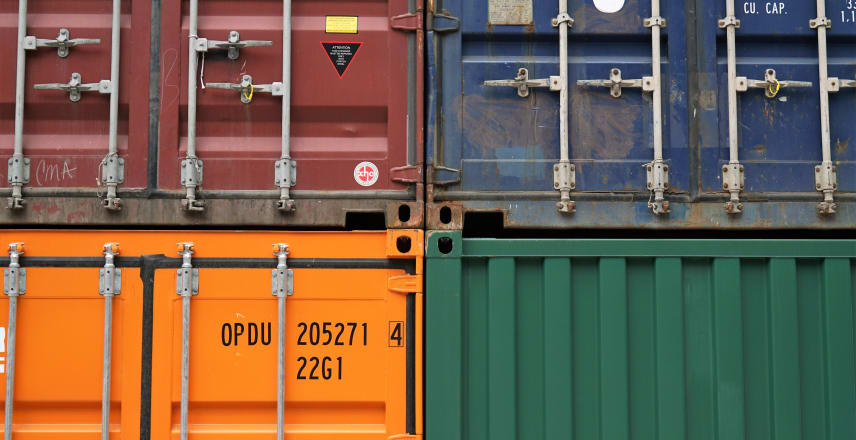Summary
In the world of DevOps, it is essential to have a reliable monitoring system in place to ensure that applications and services are running smoothly. Monit-Docker container is a powerful tool that can help you monitor and manage your Docker containers. This guide will provide an overview of Monit-Docker container, its benefits, and how to set it up. We will also discuss some best practices for using Monit-Docker container and some alternatives.
What is Monit?
Monit is an open-source process monitoring tool that can be used to monitor and manage processes, files, directories, and devices on a server. It can be used to monitor the health of applications and services, and it can also be used to detect and respond to system problems. Monit can be used to monitor and manage Docker containers.
What is Docker?
Docker is an open-source platform for building, shipping, and running distributed applications. It is a containerization technology that allows developers to package applications into isolated containers that can be run on any platform. Docker containers are lightweight and can be quickly deployed and scaled.
Benefits of Monit-Docker Container
Monit-Docker container provides a number of benefits, including:
- Automated monitoring: Monit-Docker container can be used to automatically monitor and manage Docker containers. This eliminates the need for manual monitoring and management.
- Improved performance: Monit-Docker container can help improve the performance of Docker containers by monitoring and managing them in real-time.
- Increased reliability: Monit-Docker container can help ensure that Docker containers are running reliably and efficiently.
- Cost savings: Monit-Docker container can help reduce costs by eliminating the need for manual monitoring and management.
How to Set Up Monit-Docker Container
Setting up Monit-Docker container is relatively straightforward. The first step is to install Monit on the server. This can be done using the following command:
sudo apt-get install monit
Once Monit is installed, you will need to configure it to monitor and manage Docker containers. This can be done by editing the Monit configuration file, which is located at /etc/monit/monitrc.
Monitoring Docker Containers with Monit
Once Monit is configured, you can start monitoring and managing Docker containers. Monit can be used to monitor the health of Docker containers, as well as to detect and respond to system problems. Monit can also be used to restart containers if they become unresponsive.
Best Practices for Monit-Docker Container
There are a few best practices that should be followed when using Monit-Docker container:
- Monitor all containers: It is important to monitor all containers, not just the ones that are critical to the system.
- Monitor frequently: It is important to monitor containers frequently to ensure that they are running smoothly.
- Monitor for errors: It is important to monitor for errors and respond to them quickly.
- Monitor for resource usage: It is important to monitor for resource usage and ensure that containers are not overloading the system.
Alternatives to Monit-Docker Container
There are a few alternatives to Monit-Docker container, including:
- Docker Swarm: Docker Swarm is a container orchestration tool that can be used to manage and monitor Docker containers.
- Kubernetes: Kubernetes is an open-source container orchestration platform that can be used to manage and monitor Docker containers.
- OpenShift: OpenShift is a container platform that can be used to manage and monitor Docker containers.
- Jenkins: Jenkins is an open-source automation server that can be used to manage and monitor Docker containers.
- Terraform: Terraform is an open-source infrastructure as code tool that can be used to manage and monitor Docker containers.
- Ansible: Ansible is an open-source automation platform that can be used to manage and monitor Docker containers.
- Kubectl: Kubectl is a command-line tool that can be used to manage and monitor Docker containers.
- OpenStack: OpenStack is an open-source cloud computing platform that can be used to manage and monitor Docker containers.
- Microsoft Azure: Microsoft Azure is a cloud computing platform that can be used to manage and monitor Docker containers.
- Podman: Podman is a command-line tool that can be used to manage and monitor Docker containers.
- Google Cloud Platform: Google Cloud Platform is a cloud computing platform that can be used to manage and monitor Docker containers.
- Prometheus: Prometheus is an open-source monitoring system that can be used to monitor Docker containers.
- Grafana: Grafana is an open-source monitoring platform that can be used to monitor Docker containers.
- Git: Git is a version control system that can be used to manage and monitor Docker containers.
- GitLab: GitLab is a web-based version control system that can be used to manage and monitor Docker containers.
- Linux: Linux is an open-source operating system that can be used to manage and monitor Docker containers.
- Redis: Redis is an open-source in-memory data store that can be used to manage and monitor Docker containers.
- PostgreSQL: PostgreSQL is an open-source relational database management system that can be used to manage and monitor Docker containers.
- Elasticsearch: Elasticsearch is an open-source search engine that can be used to manage and monitor Docker containers.
- Jira: Jira is an issue tracking system that can be used to manage and monitor Docker containers.
- MongoDB: MongoDB is an open-source document database that can be used to manage and monitor Docker containers.
- Apache Airflow: Apache Airflow is an open-source workflow management system that can be used to manage and monitor Docker containers.
- Ubuntu: Ubuntu is an open-source Linux-based operating system that can be used to manage and monitor Docker containers.
Conclusion
Monit-Docker container is a powerful tool that can be used to monitor and manage Docker containers. It can help improve the performance of Docker containers and ensure that they are running reliably and efficiently. This guide has provided an overview of Monit-Docker container, its benefits, and how to set it up. We have also discussed some best practices for using Monit-Docker container and some alternatives.
FAQs
-
What is Monit-Docker container? Monit-Docker container is a powerful tool that can be used to monitor and manage Docker containers.
-
What are the benefits of Monit-Docker container? The benefits of Monit-Docker container include automated monitoring, improved performance, increased reliability, and cost savings.
-
How do I set up Monit-Docker container? To set up Monit-Docker container, you will need to install Monit on the server and then configure it to monitor and manage Docker containers.
-
What are some alternatives to Monit-Docker container? Some alternatives to Monit-Docker container include Docker Swarm, Kubernetes, OpenShift, Jenkins, Terraform, Ansible, Kubectl, OpenStack, Microsoft Azure, Podman, Google Cloud Platform, Prometheus, Grafana, Git, GitLab, Linux, Redis, PostgreSQL, Elasticsearch, Jira, MongoDB, and Apache Airflow.
-
What are some best practices for using Monit-Docker container? Some best practices for using Monit-Docker container include monitoring all containers, monitoring frequently, monitoring for errors, and monitoring for resource usage.














